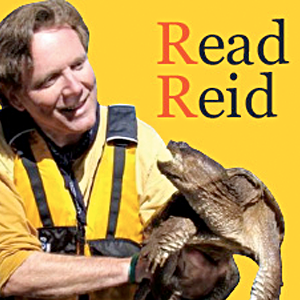
Exploring The Last Green Valley: This is ‘empty nest’ time for us and the birds
Two weeks ago, my colleague took her youngest child to college thereby joining the “empty nest” club. My youngest left the nest more than 15 years ago, but I still remember the jumbled feelings of hope and pride mixed with a tinge of sadness. For many parents, this is a time when children are leaving home for new opportunities and explorations of the possible.
That adage “empty nest” not only harkens back to birds, it refers to this time of year for the birds. Welcome to fledgling season, a time when our region’s birds complete the annual breeding cycle. During the spring and early summer, eggs began stirring and from the warm nestled eggs, chicks hatch under the anxious eyes of parent birds. With their mouths agape the tiny chicks begin their feeding to fledging cycle.
The feeding cycle of young chicks puts great demand on the parents with continuous foraging for food. It is also a dangerous time for the birds with the increased activity and noise from the young, potentially attracting predators.
The age at which a young bird makes its first flight varies greatly depending on the species. For most songbirds this is a relatively short time period, and they are ready to leave the nest at only two to three weeks after hatching.
Baby chicks of ground nesting birds are ready to move out of the nest soon after hatching. They have evolved to be well-developed when they hatch and are able to stand and walk on their own to follow their parents to safety and forage as soon as possible.
This is common in most domestic poultry species as well as ducks, geese and turkeys. Canada geese and ducks are ready to leave the nest soon after hatching. It will still be weeks before they can fly, but they take to water with their parents to escape from terrestrial predators such as fox and raccoon. Like other prey animals, such as deer and grazing mammals, waterfowl know survival from predators requires being on the move, finding safety in numbers and being skilled at avoiding detection.
For our larger raptor birds, such as hawks, owls and bald eagles, the egg to fledge cycle is much longer. Bald eagle eggs take up to 35 days to hatch and the feeding cycle to fledge can take up to eight weeks. At birth these tiny white fuzz balls will be fed a continuous diet of fish and other animals. By the time they fledge they will be the size of their parents at 30 to 35 inches tall and a wingspan of six feet.
The first days of a fledgling are not solitary adventures in survival. Parent birds teach their young how to hunt for food and will also continue to feed them. For days the young follow the parents begging for food and creating quite a racket. The young birds must learn to survive on their own and at this time are very vulnerable to starvation and predators. In most bird species, up to 50 percent will not survive their first year.
After fledging, young bald eagles will return to their nest and call out, expecting “manna from heaven” to be delivered by the parents just as it had been in the previous weeks. The adults will leave fish on the ground or even in the water for the young to retrieve on their own.
By autumn the young eagles will have begun to explore on their own, and as fall slips into winter, with the breeding season soon to begin, the parents will not tolerate the young in their territory and will drive them away – especially as the new nesting season approaches.
When young fledglings are endangered or have left the nest too early, the adults will encourage or make a loud racket to ward off danger. Blue jays and owls are known to swoop down at humans if you venture too close to a recent fledgling.
When I was about 14 years old, my friend Brian and I canoed over to a small island in the middle of the Westport River to camp for the evening. As we set up camp an osprey started dropping clam shells and sticks on our campsite. We then noticed an osprey nest in a nearby tree with two fledglings still in the nest. We moved the campsite further down the beach and out of sight of the nest.
It is the fledgling time of year. Remember, if you find a young fledgling on the ground it is best to leave it be. Its parents will take care of it with food until it can fly on its own. If injured and the parents are not in the area, you should first call your local Audubon Society to get their advice. There are bird rehabilitation organizations in the state they may refer you to.
The successful flight of a fledgling bird places it within the singular category of creature that can master earth, water and air. Man may have “conquered” water, earth and air, but it is the birds who travel though all three elements propelled only by their bodies.
We live in a beautiful place called The Last Green Valley National Heritage Corridor. Each season is full of surprises and wonder. I hope you’ll join me and so many others as we care for, enjoy and pass on this place we call home.
Bill Reid is the chief ranger of The Last Green Valley National Heritage Corridor and has lived in the region for more than 35 years. He can be reached at bill@tlgv.org.
Get Connected
Sign up for our newsletter
"*" indicates required fields



